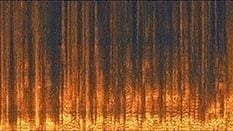Digital Multimedia Evidence and Admissibility
Forensic audio authentication follows scientific methodologies to test if an evidence audio recording present accurate information. The evidence should typically be free from any alterations, deletions, additions, or applications of file manipulation. File manipulation is the activity of altering analog or digital audio, images, and videos. Altering a recording can change the meaning of events or information within a file.
Al Zlogar follows best practices outline by the scientific community when conducting forensic audio authentication investigations. The methodologies and testing conducted in Al Zlogar’s authentication cases use science to help determine whether the audio recorded evidence is consistent with how it was originally created. His training allows him to use the tools and the latest approved scientific methods from the University of Colorado, Denver, Center for Media Forensics. His goal is to apply the skills that he learned to help the legal community present accurate information of audio recorded evidence.
Al Zlogar Forensics also offers forensic audio enhancement and forensic video enhancement services.
Authentication of Digital Audio Recordings
Authentication of digital audio recordings is a process that includes several steps outlined by the scientific community. I have incorporated these processes as best practices for Al Zlogar Forensics Inc. The available technology today allows an average person the ability to intentionally and unintentionally alter digital audio recordings. The goal of forensic audio authentication is to determine the integrity of a recording to be used as evidence in court.
Critical Listening
Al Zlogar begins all audio forensic authentication by critically listening to the audio evidence. This allows him to document and note acoustic properties and events within a recording. Examples of acoustic events include:
- Background noise (noise floor) and interference
- Voice signal information
- Other signals of interest
File Format and File Structure Analysis
Additionally, digital files contain metadata that help determine their authenticity. The file analysis includes the format,metadata, and sequential binary file structure of evidence files. These provide critical information for the integrity of the evidence recording claimed by the party who produced the recording.
Time-Domain Analysis
Then, Al Zlogar begins to inspect and thoroughly document the time-domain information of a recording. To explain, this entails noting any irregularities in the signal’s waveform, inspecting the power and energy information as well as noting the DC offsets, and documenting the number of padded zeros at the beginning and end of the audio recording.
Frequency-Domain Analysis
Following analysis of the time-domian, the frequency-domain information of an audio signal is also analyzed and documented using software tools. iZotope RX and Adobe Audition provide excellent interactive modules that show important spectral information of an audio recording. A Spectrogram is a unique visual representation of the audio recording, plotting the signal’s frequency and time domain, with amplitude information displayed through color mapping.

To summarize, these frequency-domain visual forensic tools help to detect signal discontinuities, compression, originality, and signs of lossy compression artifacts. The forensic technician conducts a comparative analysis between the information documented and the evidence recording to verify the integrity digital file.
Creating Exemplar Recordings
An audio forensic scientist create exemplars (audio recordings created with the same methods used to create the evidence) when conducting a forensic audio authentication investigation. Reference audio files and exemplars are used to verify the integrity of the evidence by comparing the two for consistency.
Conclusion
A forensic scientist must remain unbiased at all timesand best to begin any investigation on a need-to-know basis. It is of the utmost importance to use an ethical framework and to follow the principles outlined by the scientific community.
Need more information? Looking for an estimate for a service? I am available via phone, email, as well as my contact form to help you with your investigation.